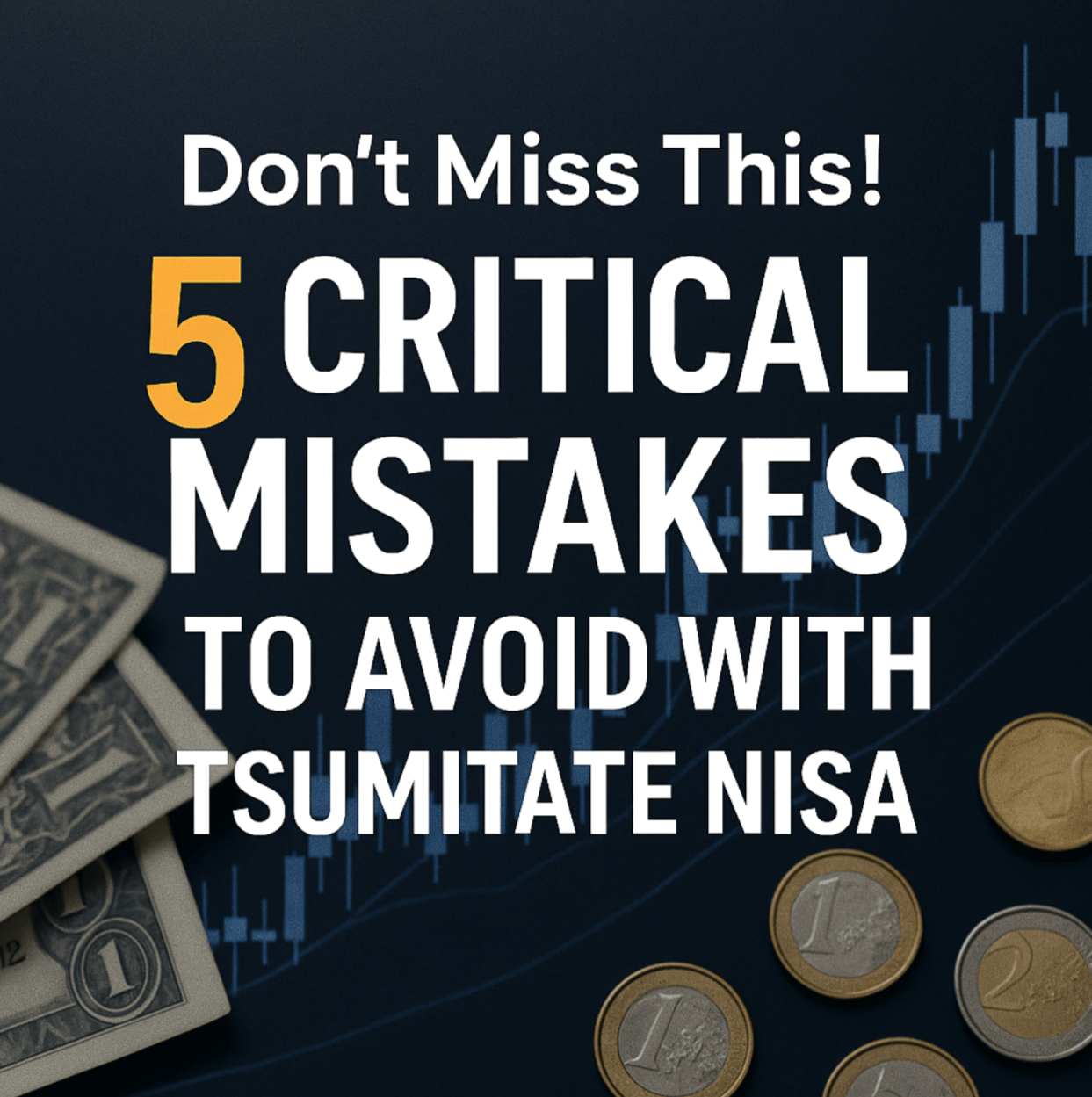Introduction
Tsumitate NISA is a powerful tool for building long-term wealth in Japan. However, starting without proper knowledge can lead to costly mistakes.
In this article, we’ll clearly explain 5 key pitfalls that beginners should avoid.
Whether you’re just getting started or already investing, take a few minutes to review these and strengthen your investment habits.
Table of Contents
Chapter 1: Starting without a clear purpose
Tsumitate NISA offers a significant advantage: tax-free investing. However, starting without a defined goal increases the chance of poor results.
This system is designed for long-term, consistent, and diversified investing, ideally over a period of 10 years or more.
Here’s how your results differ depending on whether or not you have a clear goal:
| With a Goal | Without a Goal | Result |
|---|---|---|
| A clear target like retirement or education costs | Vague motivation like “seems like a good deal” | Easier to stay committed, better outcomes |
| Risk management is based on time horizon | Prone to anxiety and giving up | Higher chance of stopping mid-way |
Having a purpose helps shape your investment plan and reduce emotional decisions. For example, if your goal is “saving for my child’s education in 10 years”, you’ll likely choose lower-risk options and stay calm during market changes.
Tsumitate NISA is not for short-term profits. Ask yourself: “Why am I investing?” before you begin.
Note: Investing without a clear purpose can cause you to second-guess yourself. Define your goal amount and investment period before you start.
Chapter 2: Ignoring risk when choosing products
When choosing investment products for Tsumitate NISA, it’s dangerous to focus only on high returns.
The higher the expected return, the greater the volatility and risk you may face.
For example, U.S. stock index funds often deliver strong long-term growth, but in the short term, they can drop by over 30%.
If you choose a product without understanding its risks, you’re more likely to panic and sell during market downturns.
The essence of Tsumitate NISA lies in long-term, regular investing. If you withdraw early due to short-term price swings, you’ll lose the tax-free advantage.
A good rule of thumb is to ask yourself:
“Can I hold this product for 10 years or more without stress?”
Check risk metrics like standard deviation or maximum drawdown, and choose funds that match your emotional tolerance.
Note: Don’t rely solely on rankings or social media buzz. Take the time to understand the risks and choose funds that align with your financial situation and mindset.
Chapter 3: Overcommitting your monthly contributions
Tsumitate NISA is all about steadily investing every month.
But in the rush to grow assets quickly, some people overextend themselves with contributions they can’t realistically maintain.
If you stretch your budget too far and an unexpected expense occurs, you may be forced to pause or stop investing, breaking your rhythm and potentially harming long-term growth.
The most important rule is to contribute an amount you can sustain without stress.
Here’s a comparison between overcommitting and proper contribution planning:
| Overcommitting | Balanced Contributions | Result |
|---|---|---|
| Sacrificing daily living costs | Using surplus funds | Strong long-term consistency |
| Forced to stop during emergencies | Able to continue despite unexpected expenses | Stable, long-term asset growth |
While it’s great to maximize your annual tax-free allowance (up to ¥1.2 million), your top priority should be consistency.
You can always start small and increase your contributions gradually as your income or lifestyle evolves.
Note: Jumping straight to the maximum limit can backfire. Make sure your household budget can handle it before deciding on your monthly amount.
Chapter 4: Panic-selling during market downturns
One of the most critical mistakes in Tsumitate NISA is selling during a market downturn.
Market declines are unavoidable in investing. If you react emotionally to short-term fluctuations, you might lock in losses that could have been avoided.
Tsumitate NISA is built on the principle of long-term investing. By steadily investing over time, you can ride out temporary declines and grow your assets.
In fact, historical data shows that most long-term investors end up with positive returns.
Rather than panicking when prices drop, consider it an opportunity to buy at lower prices.
Especially with Tsumitate NISA, monthly fixed contributions automatically apply the dollar-cost averaging method, which lowers your average purchase price over time.
The key to long-term success is not trying to time the market, but rather to keep investing consistently—even in tough times.
Note: Avoid being swayed by headlines or social media hype. Sticking to your investment plan is the real secret to success.
Chapter 5: Neglecting your account over time
While Tsumitate NISA is designed for long-term investing, completely ignoring your account can be risky.
Markets and personal circumstances change. If you don’t check in periodically, you might miss the chance to make important adjustments.
It’s ideal to review your account at least once a year to ensure your investments still align with your goals.
Here’s a comparison between proper maintenance and total neglect:
| Proper Maintenance | Neglecting Your Account | Impact |
|---|---|---|
| Regularly review your investment plan | Never check after opening the account | Exposed to unmanaged risks |
| Rebalance based on goals and lifestyle changes | Ignore changes in your situation | Reduced accuracy in achieving goals |
Frequent trading isn’t necessary. But basic monitoring is essential.
For example, reviewing your portfolio at the end of each year and adjusting your monthly contribution or fund allocation if needed can go a long way.
Major life events like marriage, having children, or job changes are also great opportunities to reassess your strategy.
Note: Passive doesn’t mean careless. Think of your investments as a garden—you don’t need to dig every day, but you should check in and nurture it regularly.

コメント